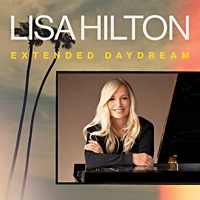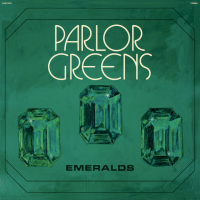Home » Jazz Musicians » Fletcher Henderson
Fletcher Henderson
The bands Fletcher Henderson led in the 1920s and 1930s were vitally significant incubators of new developments in jazz. Henderson played a key role in bringing improvisatory jazz styles from New Orleans and other areas of the country to New York, where they merged with a dance-band tradition that relied heavily on arrangements written out in musical notation. The new music that developed at Henderson's hands and under his mentorship allowed the composer's art to flourish, yet left room for the improvisatory talents of individual jazz soloists—striking a balance that has influenced jazz ever since.
Born in Cuthbert, Georgia, on December 18, 1897, James Fletcher Henderson enjoyed the best education available, his father was a teacher and a school principal, and both his parents played the piano. Henderson started piano studies at age six, but it was the classical compositions of Europe that he was taught; his parents frowned upon vernacular or down- home black traditions. He attended prep school in Atlanta and then moved on to Atlanta University, graduating in 1920 with a degree in chemistry.
Henderson moved north in 1920 hoping for a career as a research chemist, but the best he could do was a job as a lab assistant. His musical talents turned out to be more useful when he was hired the following year by the Pace & Handy music publishing firm and then by the new black-oriented Black Swan record label. His classical background and music-notation skills attracted notice at Black Swan, and when the company prepared for a national tour by its prime property, blues vocalist Ethel Waters, Henderson became the leader of her backing group.
The experience gave Henderson an education in African- American rhythms. Then, as he led bands in various New York venues in the early 1920s, he proved to have a keen ear for emerging solo talents. His ten-piece band in 1923 included saxophonists Don Redman and Coleman Hawkins, and by the following year, when he began a 12-year residence at New York's Roseland Ballroom, the band had grown to 16 players. One of them was a recent arrival from New Orleans, a cornet player named Louis Armstrong who remained with Henderson for 14 months.
With Redman writing the band's arrangements and all the instrumentalists in the band responding in inspired ways to Armstrong's innovations as a jazz soloist, Henderson's band evolved into one of the top ensembles in the country. With Armstrong leading the way, the band recorded some of its best known works, including "Copenhagen," "Go 'Long Mule," "Shanghai Shuffle" and the band's first hit, "Sugar Foot Stomp." Redman's arrangements and Henderson's own, which he began to write after Redman left to form his own band in 1927, contained the features familiar to anyone who has ever heard a classic swing recording: sectional interplay between brasses and reeds, a smooth sheen that did not foreclose a propulsive dance-floor energy, and well- conceived interludes that called upon the improvisatory skills and styles of individual players. Another important contributor to the Henderson sound was saxophonist Benny Carter, in whose arrangements the Henderson band became a natural extension of his own saxophone playing.
Read moreTags
Up In Harlem - The Bands (1924 - 1929)

by Russell Perry
In the last hour, we explored the jazz of King Oliver's Chicago in the 1920s, and heard from The New Orleans Rhythm Kings, clarinetists Jimmy Noone and Johnny Dodds, pianists Earl Hines and Lovie Austin, cornetist Freddie Keppard and trumpeter Jabbo Smith. Now we move to the other emerging center of the music, New York. While New York hosted small combos similar to Chicago, it also grew a number of significant larger groups and orchestras. We'll hear from ...
Continue ReadingOxford American 17th Annual Southern Music Issue: Georgia

by C. Michael Bailey
Oxford American 17th Annual Southern Music Issue: Georgia Eliza Borne, Editor Issue 91, Winter 2015 One of my best friends (and fellow Arkansans) and I often discuss the maddeningly conflicted legacy of those United States making up the Old Confederacy. He likes to point out that in no other region is ignorance and cultural retardation more embraced and valued than our very own Dixie. My friend often laments that anywhere is better than the American South ...
Continue ReadingThe Uncrowned King of Swing: Fletcher Henderson and Big Band Jazz

by Nic Jones
The Uncrowned King Of Swing: Fletcher Henderson And Big Band Jazz Jeffrey Magee Oxford University Press Paperback; 244 pages. ISBN 978-0-19-534065-5 2008
This book first came out in hardback in 2005, but the intervening years have done nothing to diminish its status as the volume to turn to for anyone with an interest in bandleader/pianist Fletcher Henderson, regarded by some as a rather marginal figure in jazz history.
If ...
Continue ReadingJazz Musician of the Day: Fletcher Henderson

Source:
Michael Ricci
All About Jazz is celebrating Fletcher Henderson's birthday today!
The bands Fletcher Henderson led in the 1920s and 1930s were vitally significant incubators of new developments in jazz. Henderson played a key role in bringing improvisatory jazz styles from New Orleans and other areas of the country to New York, where they merged with a dance-band tradition that relied heavily on arrangements written out in musical notation... Read more.
Place our Musician of the Day widget on your website or ...
read more
Fletcher Henderson And Don Redman: The Birth Of The Big Band Reed Section

Source:
Don Mopsick
This week, Riverwalk Jazz presents “Fletcher Henderson and Don Redman: The Birth of the Big Band Reed Section" with arrangements adapted by the Jim Cullum Jazz Band’s clarinetist Ron Hockett from the classic Henderson scores from the 1920s. To bring to life this distinctive sound, clarinetists Allan Vaché and Kim Cusack join Jim Cullum and the Band. The program is distributed in the US by Public Radio International, on Sirius/XM satellite radio and can be streamed on-demand from the Riverwalk ...
read more
Jazz Musician of the Day: Fletcher Henderson

Source:
Michael Ricci
All About Jazz is celebrating Fletcher Henderson's birthday today!
The bands Fletcher Henderson led in the 1920s and 1930s were vitally significant incubators of new developments in jazz. Henderson played a key role in bringing improvisatory jazz styles from New Orleans and other areas of the country to New York, where they merged with a dance-band tradition that relied heavily on arrangements written out in musical notation... Read more.
Place our Musician of the Day widget on your website or ...
read more
Jazz Musician of the Day: Fletcher Henderson

Source:
All About Jazz is celebrating Fletcher Henderson's birthday today!
The bands Fletcher Henderson led in the 1920s and 1930s were vitally significant incubators of new developments in jazz. Henderson played a key role in bringing improvisatory jazz styles from New Orleans and other areas of the country to New York, where they merged with a dance-band tradition that relied heavily on arrangements written out in musical notation...The bands Fletcher Henderson led in the 1920s and 1930s were vitally significant incubators ...
read more
The Fletcher Henderson Museum in Atlanta

Source:
All About Jazz
The Fletcher Henderson Museum, Inc. Atlanta, GA 30301 Keeper of the Culture Opening 2008 “If you consider yourself culturally literate, you'd better know your Fletcher Henderson." --Kevin Whitehead, Author, Jazz Critic & NPR's Fresh Air Contributor The Museum's Unique Collection includes displays of Bandleader Fletcher Henderson's Baton, One Baby Shoe & Letters To His Mother Lena Horne's Lipstick Print & Autograph Billie Holiday's Original Recording of “Strange Fruit" ...
read more
The Walter C. Allen Family Donates Extensive Reference & Research Library to the Fletcher Henderson Museum

Source:
Fletcher Henderson Museum
The Allen Family of New Jersey has donated their father, Walter C. Allen's, complete library of materials to the Fletcher Henderson Museum. Walter C. Allen, the foremost authority on the career of Fletcher Henderson, was a jazz historian at the Smithsonian Institute. He was, also, one of the founding members of the Institute of Jazz Studies at Rutgers University. Mr. Allen's monograph Hendersonia: The Music of Fletcher Henderson and His Musicians is now the authoritative work on Henderson's career. The ...
read more

































